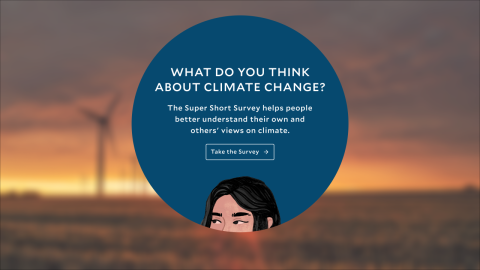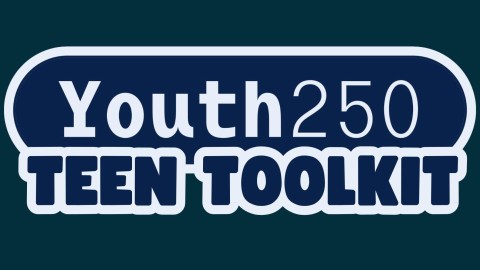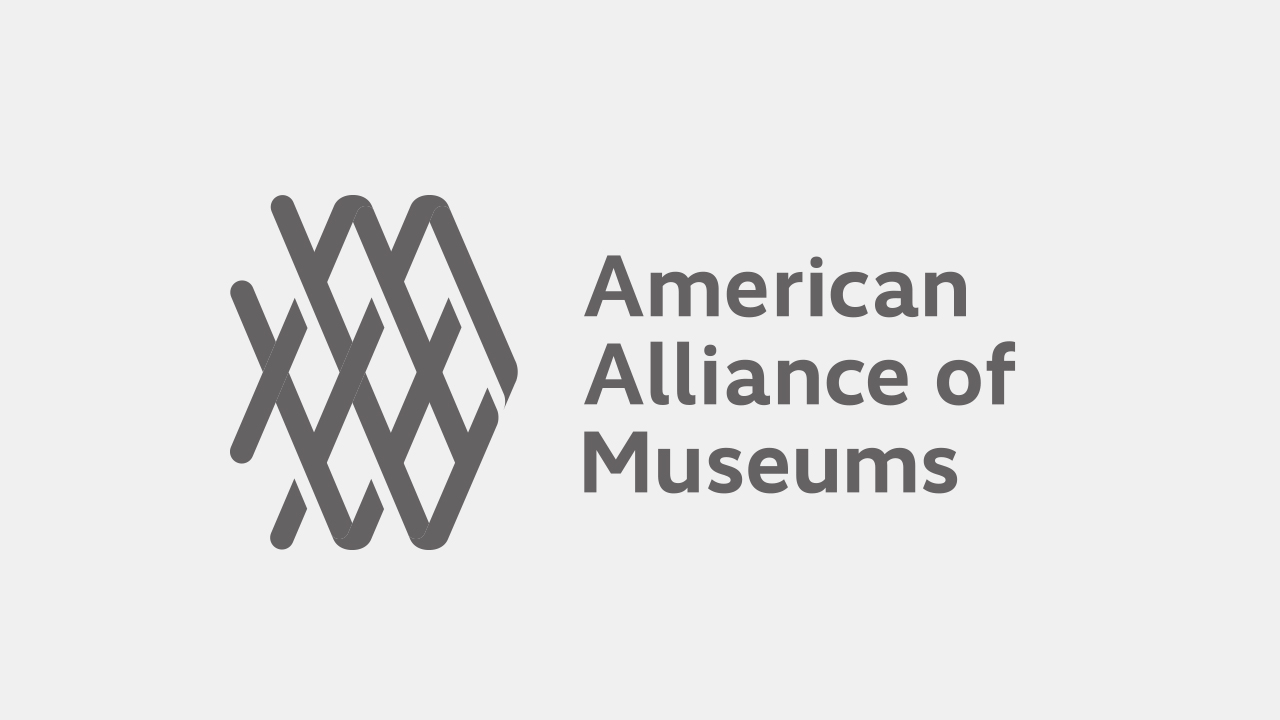
This article first appeared in the journal Exhibition (Spring 2025) Vol. 44 No. 1 and is reproduced with permission.
The Museum of Pop Culture (MOPOP) in Seattle, Washington, stands at the intersection of popular culture and societal reflection. As an institution dedicated to the collection, preservation, and display of artifacts ranging from renowned musicians’ memorabilia to film and television props, video games, and time-sensitive media, MOPOP faces unique ethical challenges. This article examines ethical considerations in the curation of pop culture exhibitions, focusing on how MOPOP responds to internal and external calls for change.
Museums have long been regarded as bastions of cultural preservation and education. More recently, their role in society has evolved as institutions have moved beyond simply collecting and displaying artifacts to assiduously cultivating dialogue, reflection, and social change. This evolution has brought a new set of ethical considerations that extend beyond acquisition and conservation.
The American Alliance of Museums (AAM) Code of Ethics has played a crucial role in guiding this transformation, establishing a baseline for ethical behavior in the museum field: “The primary goal of AAM is to encourage institutions to regulate the ethical behavior of members of their governing authority, employees, and volunteers. Formal adoption of an institutional code promotes higher and more consistent ethical standards.”[1]
As the cultural and social contexts in which museums operate continue to evolve, so too must their ethical frameworks. Museums are increasingly expected to go beyond mere compliance with legal standards to embrace a more proactive and reflective approach to ethics, one which considers the broader social, cultural, and political implications of their work.
Framing Ethics in Pop Culture Curation
At MOPOP, the concept of ethics in museum practice is recognized as multifaceted and perpetually adapting. The museum’s approach to ethical curation is shaped by the unique challenges and opportunities presented by the dynamic and often controversial subject of pop culture.
The MOPOP Curatorial Department defines ethical curation as a practice that extends beyond legal compliance, aiming to create exhibitions that are inclusive, representative, and respectful of diverse cultures and perspectives. This definition emerged from a proposed project to create a Diversity, Equity, Inclusion, and Accessibility (DEIA) audit of the permanent collection, as well as organization-wide initiatives, and is grounded in three core principles:
- Inclusivity: Actively involving diverse voices at every stage of the curatorial process.
- Transparency: Being open about decision-making processes, acknowledging limitations, and inviting dialogue with audiences and stakeholders.
- Responsibility: Recognizing the museum’s role in shaping cultural narratives and striving to represent them fairly, accurately, and contextually.
Ethical Considerations Unique to Pop Culture
Curating pop culture presents distinct ethical challenges that may not be prevalent in other museums. For example:
- Rapid Cultural Change: Pop culture evolves quickly, requiring curators to make quick decisions about not only what to preserve and display but also the language used within the museum’s walls.
- Commercialism versus Cultural Significance: MOPOP must walk a fine line between celebrating cultural phenomena and avoiding the promotion of commercial interests.
- Living Artists and Communities: Much of pop culture involves living artists, creators, communities, and passionate fandoms. This necessitates careful consideration of rights, permissions, relationships, and fair representation.
- Controversial Content: Pop culture often engages with provocative and controversial themes. MOPOP must balance the need to represent these aspects authentically with sensitivity to diverse perspectives.
Ethical Dilemmas and Areas of Potential Disagreement
MOPOP’s ethical framework is not without challenges and potential areas of disagreement:
- Historical Accuracy versus Current Sensibilities: The museum often grapples with how to present historically accurate representations that may conflict with current social norms, sensibilities, and language.
- Representation: Decisions about how to represent diverse cultures and subcultures can be contentious, particularly when addressing issues of cultural appropriation or stereotyping.
- Censorship and Artistic Freedom: The museum must balance respect for artistic expression with the need to create a welcoming environment for audiences, sometimes leading to complex decisions about content warnings or suggested age guidelines.
- Digital Ethics: As pop culture increasingly exists in digital spaces, MOPOP faces new ethical challenges related to data privacy, digital rights management, and the preservation of born-digital artifacts.
These considerations are not theoretical exercises but practical challenges that demand nuanced, intentional curatorial strategies.
Case Study 1: Massive: The Power of Pop Culture
Massive: The Power of Pop Culture, launched in 2024 as a long-term exhibition, serves as a prime example of MOPOP’s commitment to ethical curation. Massive explores the impact of pop culture, presenting a global view of pop culture and its interconnections, and challenging traditional narratives on its critical importance.
Exhibition development began with a diverse team of curators, including individuals from various racial, ethnic, and cultural backgrounds. The team consulted with cultural organizations, academics, and community leaders to ensure diverse perspectives are represented in the exhibition. Decisions were made early on to create a narrative that invited visitor responses from interactives and didactics that pose overarching questions such as, “What Makes a Pop Culture Icon?”
One of the key ethical considerations in developing Massive was the display of challenging artifacts, such as signs from the 2020 Black Lives Matter (BLM) protests by celebrities Cardi B and Billie Eilish alongside The Unauthorized Biography of a Black Man, a 2020 mural by barry johnson created during the COVID-19 pandemic. The exhibition also includes items from various subcultures, fandoms, and diverse communities, raising questions about the cultural appropriation frequently present in pop culture and the responsibilities of the museum in presenting these objects in ways that reflect their various meanings.
Over a two-year period, exhibition staff conducted more than 100 on-the-street video interviews capturing a wide range of perspectives on pop culture’s significance and boundaries, which form the basis of two in-gallery films. A rotating “Staff Selects” section featuring objects chosen annually by MOPOP staff highlights internal voices. More than 200 staff and visitors participated in formative evaluations to shape the exhibition’s themes and content, ensuring feedback directly influenced decisions. Charettes brought together stakeholders and others eager to contribute. MOPOP CEO Michele Smith curated a dedicated section, while cosplayer Miss Boof worked with curators to display their award-winning Meowster Chief costume, based on the Master Chief character in the Halo franchise. Originators of several artifacts collaborated with curators on gallery texts, lending insights to the narratives presented.
To foster transparency about the curatorial process and to reflect evolving internal conversations, the exhibition includes text panels on complex topics such as “Appreciation versus Appropriation” and “How MOPOP Approaches Problematic Creators and Creations.” These panels offer visitors insight into the museum’s decision-making processes, challenges, and values, underscoring MOPOP’s commitment to ethical curation as a dynamic and collaborative practice.
The exhibition also tackles other controversial topics, such as representation in popular media, how adult entertainment has impacted the trajectory of fame, and the complexities of celebrities’ legacies. The curatorial team chose to address these issues with methodological rigor, providing historical context and a narrative approach that solicits input and creates a dialogue with visitors.
One example of this approach is highlighted in the “How Does Pop Culture Make You Feel?” interactive, where visitors are invited to change the color of the lights behind specific artifacts as a way of reflecting on the complex emotions pop culture can evoke (fig. 1). The interactive was inspired by therapist Joseph Zinker’s book Gestalt Therapy and psychologist Robert Plutchik’s Wheel of Emotions, which pairs emotions with corresponding colors.[2] We then created a hybridized version of psychologist Gloria Willcox’s The Feeling Wheel, which allows visitors to engage with complex issues in a nuanced way, fostering critical thinking and dialogue as they select the lighting color that best reflects their feelings in that moment.[3]
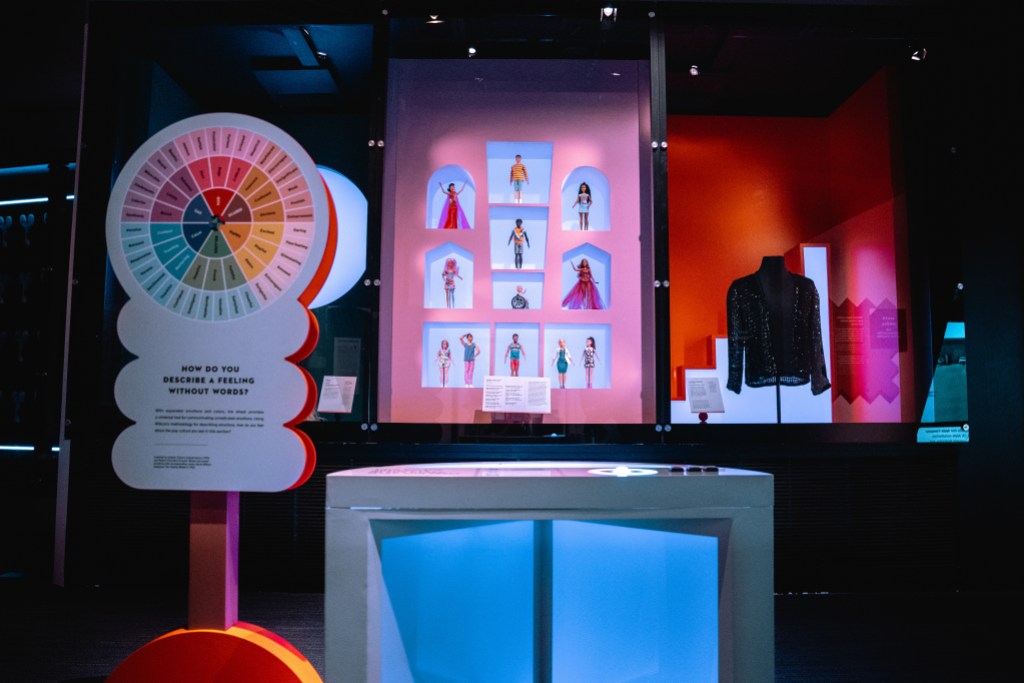
Massive incorporates other innovative interpretive strategies to enhance accessibility and engagement. Among these is a digital interactive that invites visitors to “change the channel” and explore pop culture moments from 1920 to 2024 through curated film clips, stills, and audio samples, offering diverse perspectives on cultural phenomena. The exhibition also features a film displaying side-by-side examples of the interconnectedness of global pop culture and a participatory digital interactive where visitors share their predictions for the future of pop culture. Current top submissions include the viral web series Skibidi Toilet and the slang term yeet. These responses emerged after opening when the curatorial team refined the interactive’s instructions to clarify its intent, illustrating how visitor engagement often yields surprising and unintended insights.
Case Study 2: The “Un-Alive” Controversy
In the early spring and summer of 2024, MOPOP became involved in a controversy that illuminates the intricate relationship between museum ethics, language use, and public perception. This incident, centering on an exhibition text panel about Nirvana frontman Kurt Cobain’s death, offers crucial insights into the ethical challenges museums face when balancing contemporary vernacular with respectful representation and institutional responsibility.
The controversy originated from a text panel in Gone Too Soon, an exhibition that was part of MOPOP’s Guest Curator Program, a year-long program that invites emerging curators to design their own exhibitions using the permanent collection. Guest curators bring diverse perspectives and specialized knowledge to the museum. In this instance, our guest curator’s use of the phrase un-alived to describe Cobain’s death by suicide raised significant ethical questions about the appropriate language for discussing sensitive topics in museum settings. While the guest curator’s intent was to highlight the rapid evolution of linguistics, this did not come through in the short didactic and the reason for their choice was not thoroughly communicated to visitors.
As some visitors posted images of the didactic online, the controversy spread on social media platforms, highlighting the ethical implications of public-facing content in the digital age. A viral post criticizing the exhibit’s language accumulated more than nine million views, sparking intense debate about the use of contemporary and social media slang, especially when addressing sensitive subjects (fig. 2). The post was picked up by news agencies including Billboard and CNN.[4]
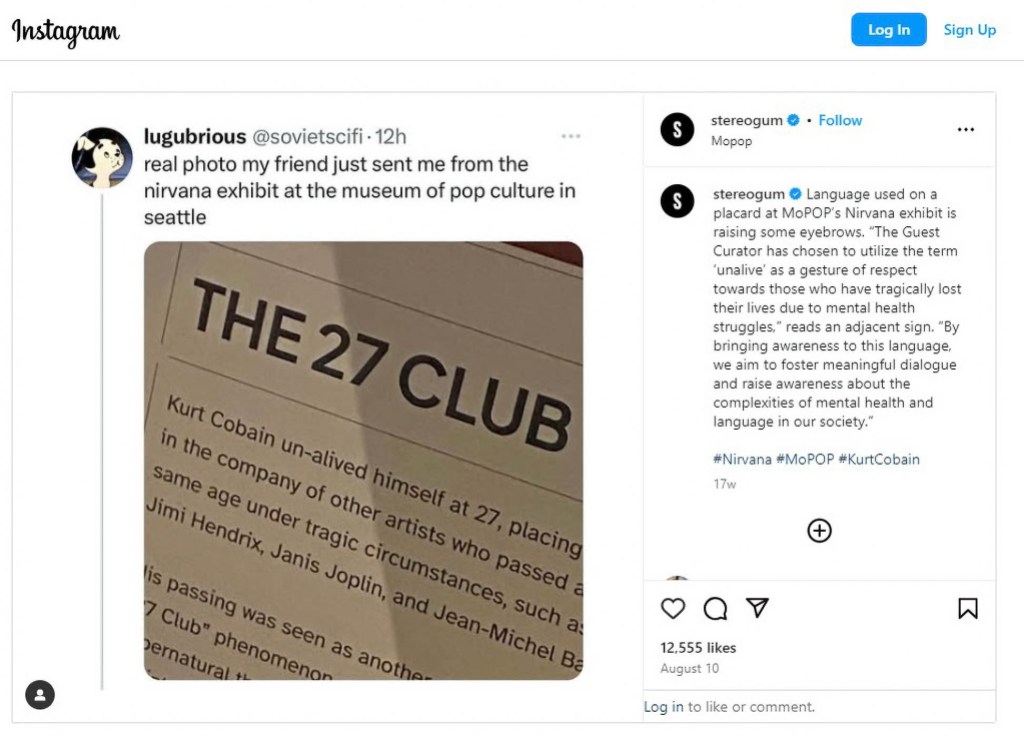
The museum’s response to the controversy unfolded in stages, reflecting its commitment to ethical curation and public engagement. By April 2024, one month after the exhibition’s installation, the curatorial team had proactively added a contextual panel to elucidate the intention behind the term’s usage, a decision made with the guest curator (fig. 3).
Despite this addition, social media discourse intensified in August 2024, and the museum took further action. Prior to this escalation, the curatorial team had already engaged in discussions with the guest curator and reached a decision to replace the phrase with “died by suicide.” MOPOP also consulted with its public relations firm to assess the potential risks and develop a strategic mitigation protocol, ultimately deciding to not directly engage with the online discourse. This collaborative effort between curators, advisors, and communication experts highlights the careful navigation required in such situations, preserving the integrity of the exhibition while addressing ethical concerns.
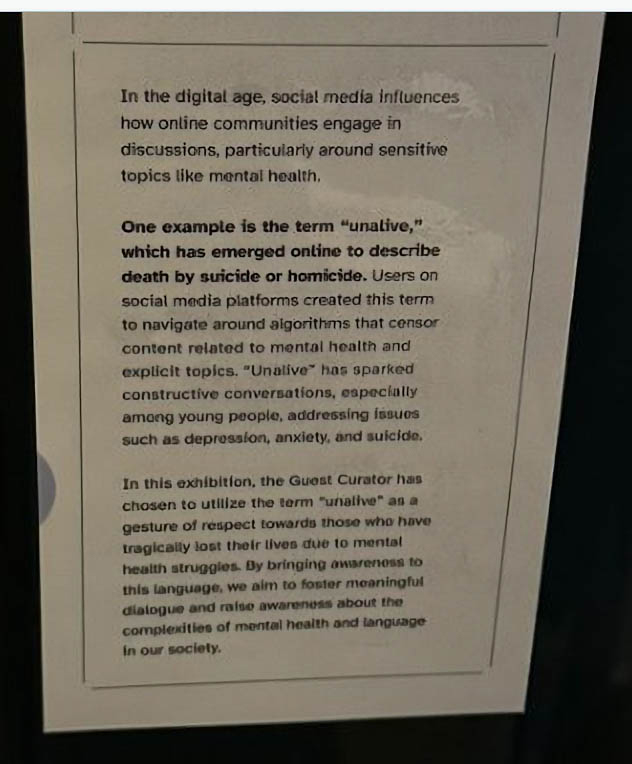
This chronology of events further illustrates the complex ethical considerations faced by cultural institutions. It exemplifies MOPOP’s endeavor to strike a delicate balance between several key factors: recognizing that academic freedom is a core value that fuels innovation in exhibitions, maintaining transparency with visitors, fulfilling educational objectives, and upholding ethical responsibilities. The process underscores the importance of proactive communication and shared understanding. Yet, when conversations go beyond our walls, the structure and intention often disappear, with online platforms playing by entirely different rules and mutually exclusive languages that can—and often do—misrepresent the original aims of the content and its creators.
This incident highlights several key considerations for museums:
- The need for clear guidelines in guest curation programs, balancing diverse perspectives with institutional standards.
- The importance of judiciously deliberating language choices, especially when addressing sensitive topics like mental health.
- The obligations of museums to anticipate and respond to public reactions in an era of rapid information dissemination.
- The challenge of maintaining institutional integrity while being responsive to public concerns.
- The intersection of legal and ethical considerations, as well as risk management.
Case Study 3: Keith Haring: A Radiant Legacy
Keith Haring: A Radiant Legacy, a traveling exhibition that opened in October 2024, presented another, albeit less sensational, set of ethical challenges for MOPOP. Haring’s work often addressed sensitive topics such as AIDS activism, sexual expression, and LGBTQIA+ rights; curating Haring’s legacy requires careful consideration of representation.
The curatorial team worked closely with LGBTQIA+ and other community organizations, youth curators, and artists to ensure that the exhibition accurately represented Haring’s identity and activism (fig. 4). We had frank discussions about how to present Haring’s HIV/AIDS status and its impact on his work and the explicit nature of some of his artworks.
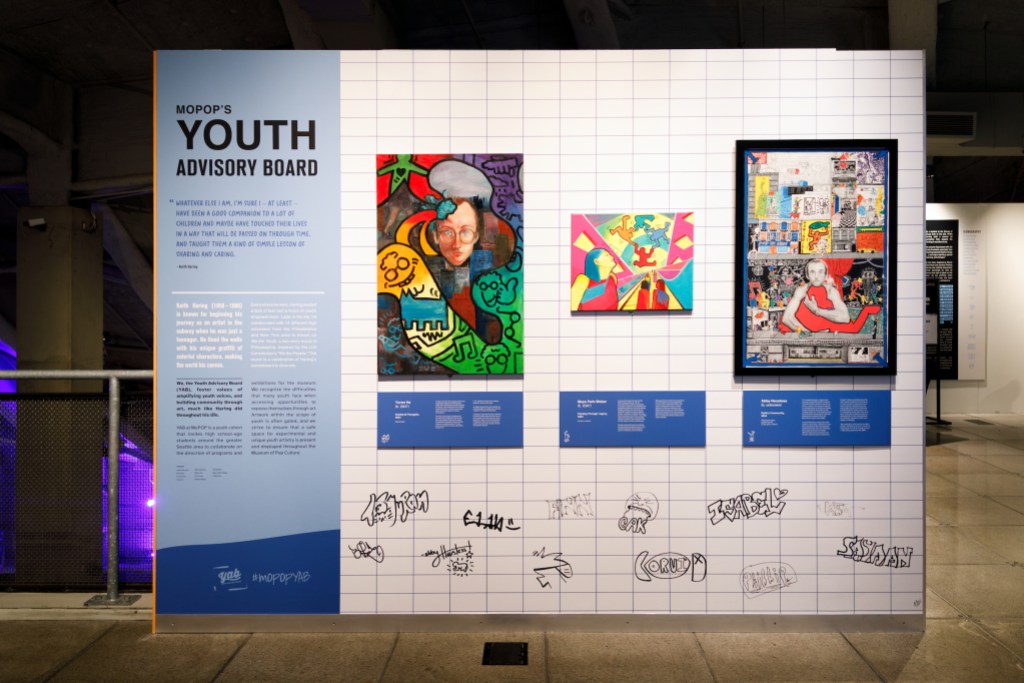
We spent several months running extensive formative evaluations with staff and visitors to understand how they would like this information communicated—both within the museum and through the marketing campaign—with two-thirds of the 150 respondents requesting some sort of content warning and a quarter desiring a separate section for explicit content. This resulted in a complex content warning that explained the content of the exhibition without judgment or stigmatization. Following further curatorial review, we removed one artwork from the series The Story of Red and Blue, as it could have a negative racial interpretation, and created a separate section with enhanced content warnings for the most explicit pieces (fig. 5). Our intention in making these changes to the exhibition was to ensure a thoughtful and inclusive presentation that met the expectations of our audience. As a pop culture museum, MOPOP must often navigate between the complexities of the content we present and the expectations of visitors that the institution be family-forward.[5] This can create situations many other museums—contemporary art museums that routinely display Haring’s work, for example—may not need to consider.
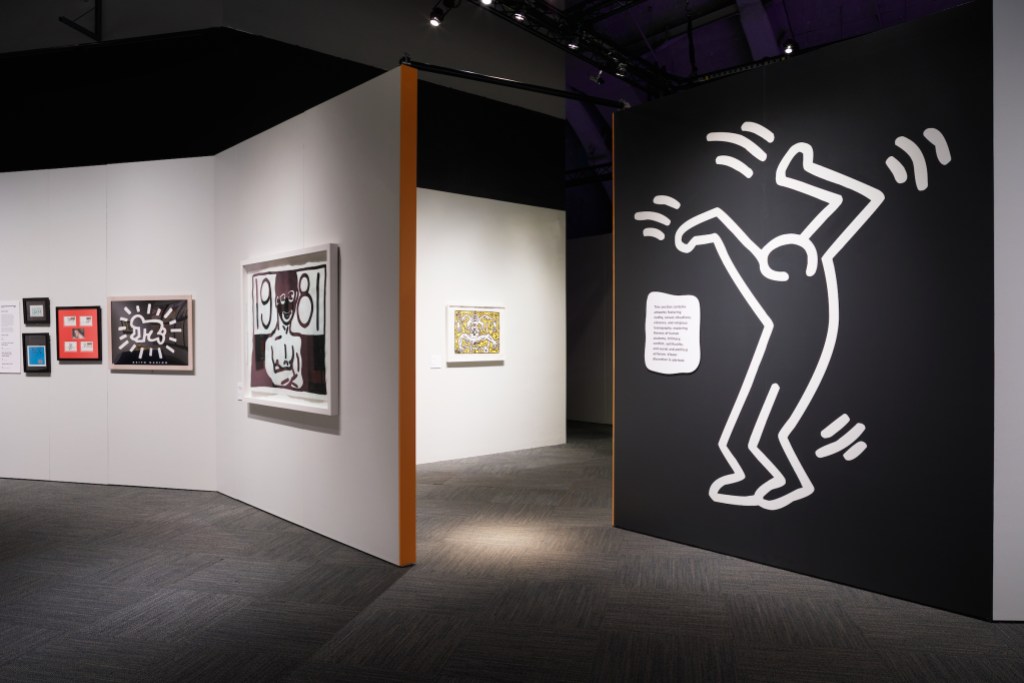
Further Ethical Considerations in Pop Culture Curation
As these case studies illustrate, the curation of pop culture presents unique ethical challenges.
Pop culture is often tied to living artists, creators and/or their estates, and passionate communities, necessitating careful consideration of rights, permissions, and representation. MOPOP has developed a comprehensive set of internal guidelines and legal documentation for working with artists and creators, ensuring that their rights and wishes are respected in the display and interpretation of their work.
Additionally, fame does not automatically make someone a good or bad person, and when MOPOP celebrates an artist, we must make it clear to our visitors that we are not necessarily celebrating everything about them. The curatorial team believes we have a responsibility to illuminate substantive discourses surrounding difficult truths, and our approach is not to remove the controversial creator or creation, but to open a dialogue and present opportunities for reflection and understanding. Yet we, like all museums, are limited by the physical space available. This can make it challenging to engage with our visitors in a nuanced way. How this translates into our responsibilities as a museum is something we constantly grapple with, but we believe these are exactly the kinds of conversations that we are meant to engage in as an educational institution.
Another key ethical consideration is the potential for commercialism to influence curatorial decisions. As a museum dedicated to popular culture, MOPOP must navigate the fine line between celebrating cultural phenomena and promoting commercial interests. This raises questions about authenticity, value, and the role of the museum in elevating certain items to the status of cultural artifacts. It also requires a strong commitment to curatorial independence and transparency about any commercial partnerships or sponsorships the museum may enter into.
The rapid pace of change in popular culture also presents ethical challenges. How does a museum decide which current trends merit institutional legitimation, preservation, and exhibition? How can exhibitions remain relevant in a rapidly changing cultural landscape? MOPOP addresses these challenges through a combination of long-term planning and flexibility, allowing for rapid-response exhibitions on current phenomena while maintaining a core of more enduring exhibitions.
Toward a Comprehensive Ethics Framework
Based on the case studies and considerations outlined, we can begin to envision what a comprehensive code of ethics for any museum might look like. Such a code would need to address several key areas:
- Inclusive Decision-Making: Commitments to diversity in staffing, community engagement in curatorial processes, and transparency in decision-making.
- Representation and Cultural Sensitivity: Guidelines for the ethical display and interpretation of cultural artifacts, protocols for collaborating with underrepresented communities, and commitments to amplifying diverse voices.
- Digital Ethics: Policies on digital rights management, the preservation of digital artifacts, and the ethical use of visitor data.
- Environmental Sustainability: Commitments to minimizing environmental impact and incorporating environmental themes into exhibitions where relevant.
- Universal Access: Commitments to making exhibitions and programs accessible to all visitors.
- Ongoing Evaluation and Adaptation: Mechanisms for regularly reviewing and updating ethical policies in response to changing societal norms and museum practices.
Implementing such a comprehensive ethical framework requires a commitment from all levels of the organization, from the board of trustees to front-line staff. It also requires ongoing training and professional development to ensure that all staff members understand and can apply ethical principles in their daily work.
As MOPOP looks to the future, we remain committed to expanding the parameters of ethical curation and exploring new ways to engage with our community. This includes continuing to prioritize universal access in all aspects of our work, from curatorial decisions to educational programs and public outreach. As the museum evolves with the changing cultural landscape, we maintain our philosophical adherence to the belief that museums must serve as ethical stewards of the cultures they represent, not just custodial stewards and displayers of artifacts. This responsibility brings significant ethical challenges, particularly in the context of pop culture, where issues of representation, appropriation, and hegemonic relationships are prominent.
MOPOP’s inclusive and reflective approach to curatorial practices not only addresses these challenges but can also set an example. The museum’s commitment to transparency, community engagement, and continuous learning fosters a cultural landscape where all voices are valued.
Amalia Kozloff is Senior Curator at the Museum of Pop Culture (MOPOP) in Seattle, Washington.
[1] “AAM Code of Ethics for Museums,” Ethics, Standards, and Professional Practices, American Alliance of Museums, adopted 1993 and amended in 2000, accessed January 27, 2025, www.aam-us.org/programs/ethics-standards-and-professional-practices/code-of-ethics-for-museums/.
[2] Joseph Zinker, Creative Process in Gestalt Therapy (Gestalt Press, 1976); and Linda Camras, Robert Plutchik, and Henry Kellerman, “Emotion: Theory, Research, and Experience. Vol. 1. Theories of Emotion,” American Journal of Psychology 94, no. 2 (June 1981): 370–72.
[3] Gloria Willcox, “The Feeling Wheel: A Tool for Expanding Awareness of Emotions and Increasing Spontaneity and Intimacy,” Transactional Analysis Journal 12, no. 4 (1982): 274–76.
[4] Ashley Iasimone, “Social Media Users Debate Using the Term ‘Un-Alived’ on Kurt Cobain Placard at Seattle Museum,” Billboard, August 11, 2024, https://www.billboard.com/music/music-news/kurt-cobain-unalived-nirvana-exhibit-seattle-museum-pop culture-1235750842/; and Scottie Andrew, “The Death of Nirvana’s frontman is raw for many. A photo showing the word ‘unalived’ stirred fresh emotion,” CNN, August 17, 2024, https://www.cnn.com/2024/08/17/entertainment/unalive-meaning-kurt-cobain-seattle-museum-cec/index.html.
[5] A “family-forward” museum creates an inclusive environment that welcomes families while maintaining content sophisticated enough to engage multiple age groups, offering practical amenities and thoughtful design that supports diverse learning experiences. Unlike strictly “family-friendly” museums that focus solely on young visitors, “family-forward” museums provide opportunities for intergenerational interaction and deeper exploration, ensuring that exhibits and spaces are accommodating without sacrificing complexity.




